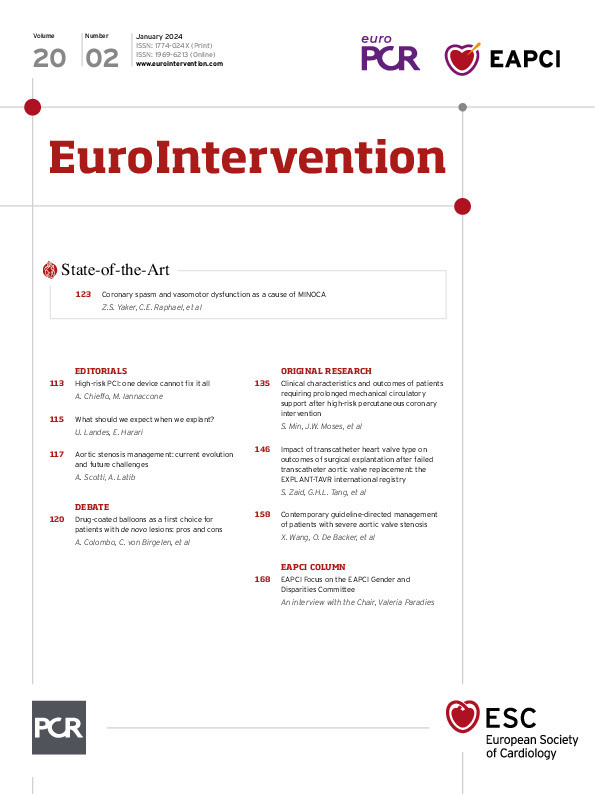We hope your year has begun well and full of excitement! It certainly has for us at EuroIntervention where we’re still at the beginning of all the new graphic changes and scheduling we spoke about in the last issue. And here it is – the first of our new, leaner, and more timely Journals that you will be receiving every 2 weeks. What do you think? We’re interested in your reactions and comments, so don’t hesitate to contact us online.
And, as for this issue itself, here are the key topics you’ll find right now:
EuroIntervention state-of-the-art
In a state-of-the-art on coronary spasm and vasomotor dysfunction, Zachary S. Yaker, Claire E. Raphael and colleagues review the current understanding, pathophysiology and treatment approaches for this frequently underdiagnosed condition.
Transcatheter aortic valve replacement explant for failed balloon-expandable valves vs failed self-expanding valves
Is mortality in transcatheter aortic valve replacement (TAVR) explantation associated with the type of failed transcatheter heart valve? Syed Zaid, Gilbert H.L. Tang and colleagues compare the outcomes of balloon-expandable valves versus self-expanding valves TAVR explantation using the EXPLANT-TAVR registry. The authors evaluate endocarditis, paravalvular leakage, structural valve deterioration and patient-prosthesis mismatch as well as mortality associated with the explantation of each valve type.
Prolonged mechanical circulatory support in high-risk PCI
What happens when you put high-risk PCI patients on prolonged mechanical circulatory support? Sugi Min, Jeffrey W. Moses and colleagues discuss early recognition of high-risk PCI and how best to wean patients off mechanical circulatory support, including the use of right heart catheterisation.
Real-world management of aortic stenosis patients
In a unique study out of Denmark, Xi Wang, Ole De Backer and colleagues examine the confluence of guideline recommendations and Heart Team evaluations. Focusing on a region with nearly 3 million people where all aortic stenosis patients are channelled through one centre, the authors analyse the value of the Heart Team in this “real-world” practice setting.

